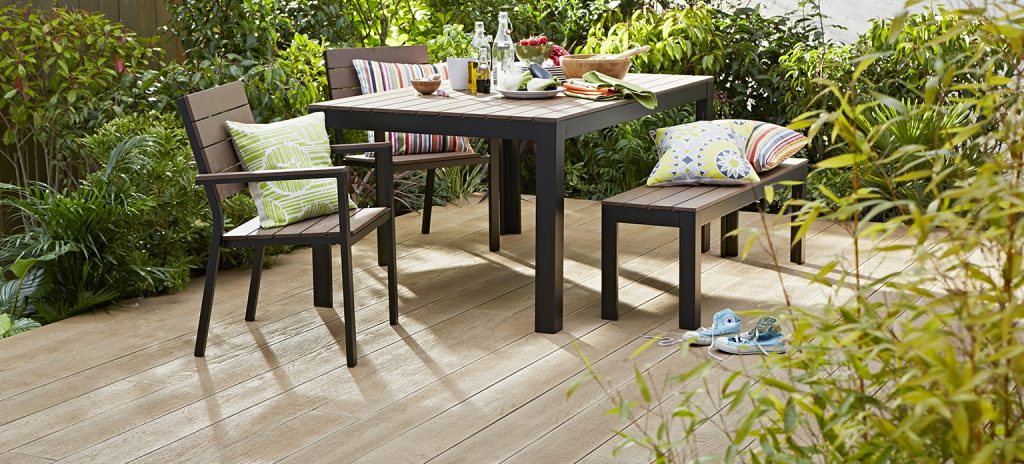Decking material is an essential aspect that significantly influences the durability, aesthetics, and maintenance requirements of your outdoor living space. A well-chosen decking material can transform your garden, patio, or terrace into an inviting and functional area that can be enjoyed throughout the year. Among the myriad of options available in the market, Millboard decking emerges as a top choice for homeowners and professionals alike. Millboard decking is a type of composite decking that combines the natural beauty of real wood with the durability and low maintenance characteristics of synthetic materials. It is ingeniously designed to provide a long-lasting solution for those looking to create the perfect outdoor living space. With an increasing number of people recognising the importance of outdoor spaces, there has been a surge in demand for decking solutions that not only enhance the aesthetic appeal of a property but also offer durability and ease of maintenance. Millboard decking perfectly aligns with these requirements, making it an increasingly popular choice among discerning homeowners.
What is Millboard Decking?
Millboard decking is a premium composite decking material made from a unique blend of polyurethane and mineral stone. This innovative composition sets it apart from traditional wooden decking, which is susceptible to rotting, warping, and splintering over time. Millboard decking is ingeniously designed to withstand the elements and provide a stable, slip-resistant surface that will endure for years to come. One of the key benefits of Millboard decking is its exceptional durability and longevity. It is resistant to the detrimental effects of UV light, algae, and insects, making it an ideal choice for outdoor applications in various climates. Additionally, Millboard decking requires minimal maintenance, which not only frees up your valuable time but also reduces the long-term costs associated with decking upkeep. This low-maintenance decking solution is also available in a variety of finishes, mimicking the look and feel of natural wood, thereby making it a visually appealing option for any outdoor space. Furthermore, the variety of finishes offered by Millboard decking allows homeowners to select a style that perfectly complements the existing aesthetics of their property, creating a cohesive and harmonious outdoor environment.
Advantages of Millboard Decking
One of the most significant benefits of Millboard decking is its durability and longevity. The decking is manufactured from a unique combination of polyurethane and mineral stone, making it incredibly resistant to common issues that plague other decking materials, such as moisture, insects, UV light, and algae growth. This resistance ensures that Millboard decking does not crack, warp, or splinter, providing a safer environment, especially in households with children or pets. The exceptional durability of Millboard decking ensures that the surface remains stable and slip-resistant, providing a long-lasting outdoor living space that will endure the tests of time and weather.
In addition to its durability, Millboard decking requires very low maintenance, which is a significant advantage over traditional wood decking. Wood decking requires regular staining or sealing to protect it from the elements, whereas Millboard decking only requires a simple sweep and an occasional clean with warm soapy water or a mild detergent to maintain its appearance. This not only saves time and effort that would otherwise be spent on upkeep but also reduces the long-term costs associated with maintaining an outdoor living space. With Millboard decking, you can enjoy more time relaxing and less time worrying about the maintenance of your outdoor space.
Another notable benefit of Millboard decking is its aesthetic appeal. The decking is available in a variety of finishes that mimic the natural look and feel of wood, providing the beauty and warmth of natural wood without the associated maintenance and durability issues. Additionally, Millboard decking is designed to be fade-resistant, ensuring that it retains its aesthetic appeal for years to come. This means that with Millboard decking, you can achieve a beautiful, natural-looking outdoor living space without the compromises associated with traditional wood decking.
Safety is another crucial advantage of Millboard decking. The surface is specially designed to be slip-resistant, even when wet, which helps prevent accidents and makes the decking safe to use in all weather conditions. This is particularly important for households with children or pets, as it reduces the risk of slips and falls. Additionally, because Millboard decking does not splinter or crack, it helps prevent injuries that can occur from walking on a damaged surface. This level of safety makes Millboard decking a smart choice for any outdoor space, as it ensures that the area can be enjoyed safely by all.
Environmental friendliness is also a key benefit of Millboard decking. The manufacturing process is designed to minimise waste and energy consumption, which helps reduce its environmental impact. Additionally, the core of Millboard decking is made from recycled material, and the decking itself is 100% recyclable at the end of its life. This commitment to environmental sustainability makes Millboard decking a responsible choice for those who are conscious of their environmental footprint.
Lastly, the ease of installation is a significant advantage of Millboard decking. The installation process is relatively straightforward and can be carried out by a competent DIY enthusiast or a professional installer. Millboard provides detailed installation guides and instructional videos to assist with the process, ensuring that you can achieve a professional-looking finish regardless of your level of experience. This ease of installation not only makes the process less daunting but also helps reduce the overall cost of the project, as it minimises the need for professional assistance. Moreover, the comprehensive warranty provided by Millboard, which covers the decking boards for 25 years for residential applications and 5 years for commercial applications, provides peace of mind and assurance of the product’s quality and durability.
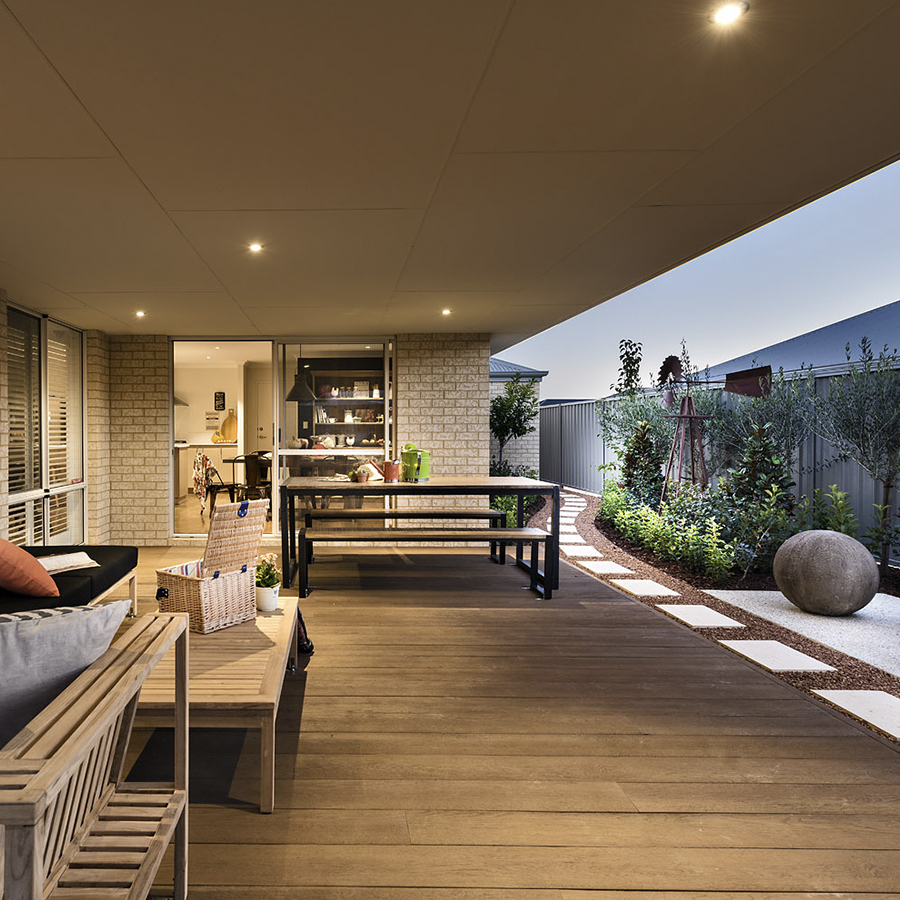
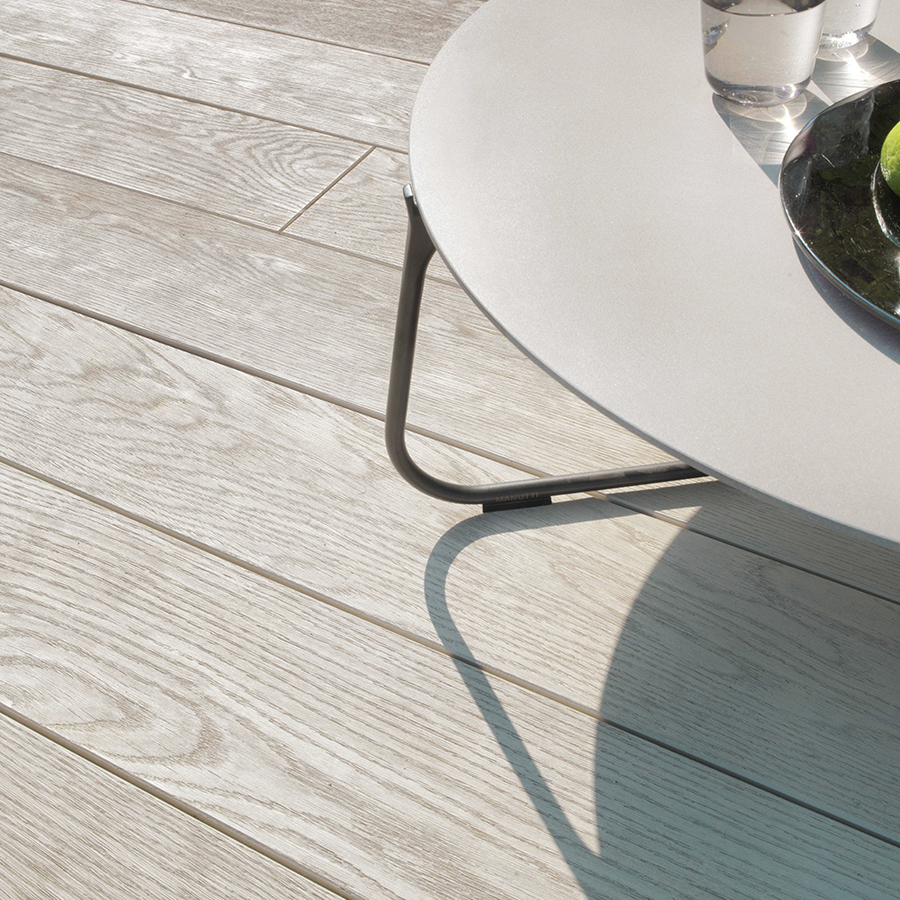
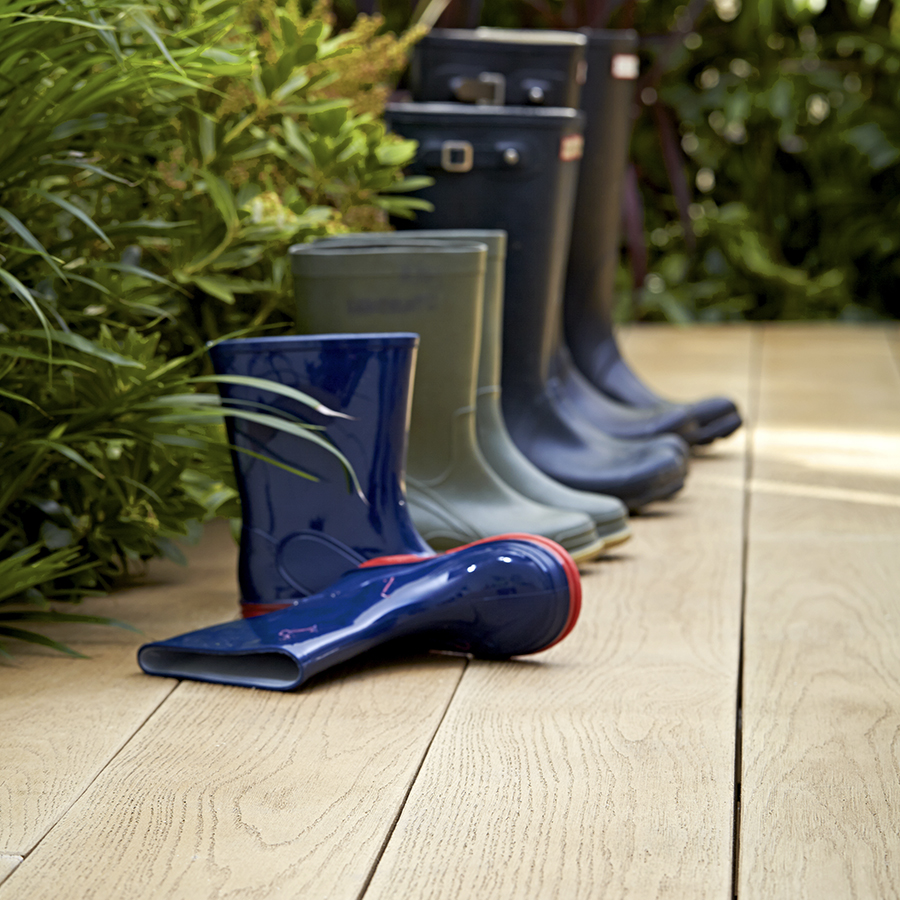
Comparison with Other Decking Materials:
When it comes to choosing the right decking material, it’s important to consider all available options. Traditional wooden decking, plastic decking, and other composite materials are commonly used options, each with its own set of advantages and disadvantages.
Wooden Decking:
Traditional wooden decking has been a popular choice for many years due to its natural aesthetic appeal. It is available in a variety of species, including pressure-treated pine, cedar, redwood, and tropical hardwoods. However, wooden decking requires a significant amount of maintenance, including regular staining or sealing to protect against moisture, insects, and UV damage. Over time, wood can crack, warp, and splinter, leading to an uneven surface that can be unsafe. Additionally, wood is susceptible to mold, mildew, and algae growth, which can make the surface slippery and unattractive. While the initial cost of wooden decking may be lower than some other options, the ongoing maintenance costs and potential for replacement make it a less cost-effective choice in the long term.
Plastic Decking:
Plastic decking is made entirely of synthetic materials, such as PVC (polyvinyl chloride). It is resistant to moisture, insects, and UV light, making it a durable and low-maintenance option. However, plastic decking can look and feel artificial, lacking the natural warmth and texture of wood. It can also become uncomfortably hot in direct sunlight and may expand and contract with temperature changes, leading to a less stable surface. Additionally, while plastic decking is recyclable, the production process is not environmentally friendly, as it involves the use of non-renewable resources and generates significant carbon emissions.
Other Composite Materials:
Other composite decking materials are made from a combination of wood fibres and plastic. These materials offer a balance between the natural aesthetic of wood and the durability and low maintenance of plastic. However, they can still be susceptible to some of the same issues as wooden decking, such as mold, mildew, and algae growth. Additionally, the surface of some composite decking materials can become scratched or stained, and the colour may fade over time. Moreover, while composite decking is more environmentally friendly than plastic decking, it still involves the use of non-renewable resources and may not be fully recyclable.
Millboard Decking:
Compared to these options, Millboard decking offers several advantages. It is made from a unique blend of polyurethane and mineral stone, making it exceptionally durable and resistant to moisture, insects, UV light, and algae growth. The surface of Millboard decking is designed to be slip-resistant, even when wet, and does not crack, warp, or splinter, making it a safer option for households with children or pets. Additionally, Millboard decking is available in a variety of finishes that mimic the look and feel of natural wood, making it a visually appealing option. Moreover, Millboard decking is manufactured using a process that minimises waste and energy consumption, making it a more environmentally friendly option. It is also 100% recyclable at the end of its life, further reducing its environmental impact.
In summary, while traditional wooden decking, plastic decking, and other composite materials each have their own set of advantages and disadvantages, Millboard decking offers a superior balance of durability, low maintenance, aesthetic appeal, safety, and environmental friendliness.
Installation and Cost:
The installation process of Millboard decking is relatively straightforward and can be carried out by a competent DIY enthusiast or a professional installer. Millboard provides detailed installation guides and instructional videos to help you through the process. This means that you can achieve a professional-looking finish, even if you choose to install the decking yourself.
The installation process involves the following steps:
1. Preparation: Ensure that the area where the decking will be installed is level and free of debris. If installing over grass or soil, it is recommended to lay a weed barrier fabric and a layer of gravel to prevent weed growth and ensure proper drainage.
2. Substructure: Install the substructure or joists that will support the decking boards. It is important to ensure that the joists are level and evenly spaced. Millboard recommends a maximum joist spacing of 400mm for residential applications.
3. Laying the Boards: Lay the Millboard decking boards on the joists, ensuring that there is a minimum gap of 4mm between the boards to allow for expansion and contraction. Use the Millboard Durafix screws to fix the boards to the joists. These screws are designed to be hidden in the grooves of the boards, resulting in a clean and seamless finish.
4. Edging and Fascia: Install the edging and fascia boards to finish the edges of the decking and give it a polished look.
The cost of Millboard decking is higher than some other decking options, but it is important to consider the long-term benefits and cost savings. The durability and low maintenance requirements of Millboard decking mean that it will not need to be replaced as frequently as other decking materials, which can result in significant cost savings over time. Additionally, the time and effort saved on maintenance can also contribute to the overall cost-effectiveness of Millboard decking. When all these factors are considered, it is clear that Millboard decking offers excellent value for money and is a smart investment for any outdoor space.
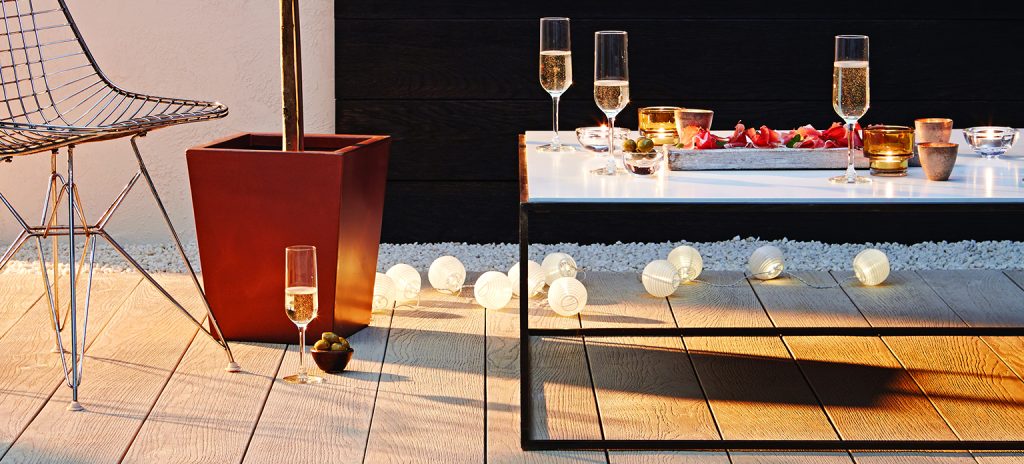
Maintenance and Warranty
One of the most attractive features of Millboard decking is its low maintenance requirements. Unlike traditional wooden decking, which needs regular staining or sealing to protect against the elements, Millboard decking requires minimal upkeep to maintain its appearance and performance.
Maintenance:
To keep your Millboard decking looking its best, it is recommended to carry out the following maintenance tasks:
1. Cleaning: Regularly sweep the decking to remove leaves, dirt, and other debris. For more thorough cleaning, use a soft brush and warm soapy water or a mild detergent. Millboard also offers a specially formulated cleaner designed to remove stubborn stains and grime.
2. Avoiding Damage: While Millboard decking is highly durable and resistant to scratches and stains, it is advisable to take precautions to avoid damage. For example, use protective pads under furniture legs and avoid dragging heavy objects across the decking. Additionally, while Millboard decking is resistant to algae and mold growth, it is advisable to remove leaves and other organic material that may accumulate on the surface, as these can create damp conditions that promote growth.
Warranty:
Millboard decking comes with a comprehensive warranty, providing peace of mind and assurance of the product’s quality and durability. The warranty covers the decking boards for 25 years for residential applications and 5 years for commercial applications, protecting against material defects, splitting, splintering, rot, and fungal decay. Additionally, the warranty covers the colour stability of the boards, ensuring that they will retain their aesthetic appeal for years to come. It is important to note that the warranty is valid only if the decking is installed and maintained according to Millboard’s guidelines. You can read the full Millboard warranty terms here.
Why should you choose Millboard Decking?
Creating the perfect outdoor living space involves a careful consideration of various factors, including durability, maintenance requirements, aesthetic appeal, and environmental impact. Millboard decking offers a superior solution that addresses all these concerns. With its exceptional durability, low maintenance requirements, beautiful aesthetic, and environmental friendliness, Millboard decking is a smart investment for any outdoor space. Additionally, the straightforward installation process and comprehensive warranty make it an even more attractive option. While the initial cost may be higher than some other decking options, the long-term benefits and cost savings make Millboard decking excellent value for money. Whether you are a homeowner looking to enhance your outdoor living space or a professional installer seeking a high-quality decking solution, Millboard decking is a top choice worth considering.
At Arbour Living, we are proud to stock the entire range of Millboard decking and fascia boards at some of the most competitive prices in the UK. We understand the importance of quality and affordability, which is why we offer Millboard products at unbeatable prices. Millboard decking is renowned for its durability, realism, and low maintenance, making it the ideal choice for any outdoor space. Whether you are looking to create a beautiful outdoor living area, a safe and durable deck around a swimming pool, or a stylish balcony or terrace, Millboard decking and fascia boards are the perfect solution. Visit the Millboard section of our website to explore our full range of Millboard products and start planning your dream outdoor space today.
Millboard Decking FAQs
-
What is Millboard decking made of?
Millboard decking is made of a unique blend of polymer resins and natural minerals, which makes it incredibly durable and realistic in appearance. It is not made of timber, but it is designed to look like real wood.
-
Is Millboard decking eco-friendly?
Yes, Millboard decking is eco-friendly. It is made from a composite material that is designed to last a long time, which means you won’t need to replace it as often as traditional timber decking. Additionally, Millboard decking is made from non-toxic and recyclable materials.
-
How long does Millboard decking last?
Millboard decking is extremely durable and is designed to last at least 25 years. It is resistant to rot, algae, and insect infestation, which are common problems with traditional timber decking.
-
How do I clean Millboard decking?
Millboard decking is very low maintenance. It is resistant to algae and mold, so it doesn’t require any special cleaning. However, you can use a brush and some soapy water to clean the surface if necessary. It is also recommended to clean up any spills immediately to prevent staining.
-
Is Millboard decking slip-resistant?
Yes, Millboard decking has a high slip resistance even when wet. It has been independently tested to meet British and European standards for slip resistance.

